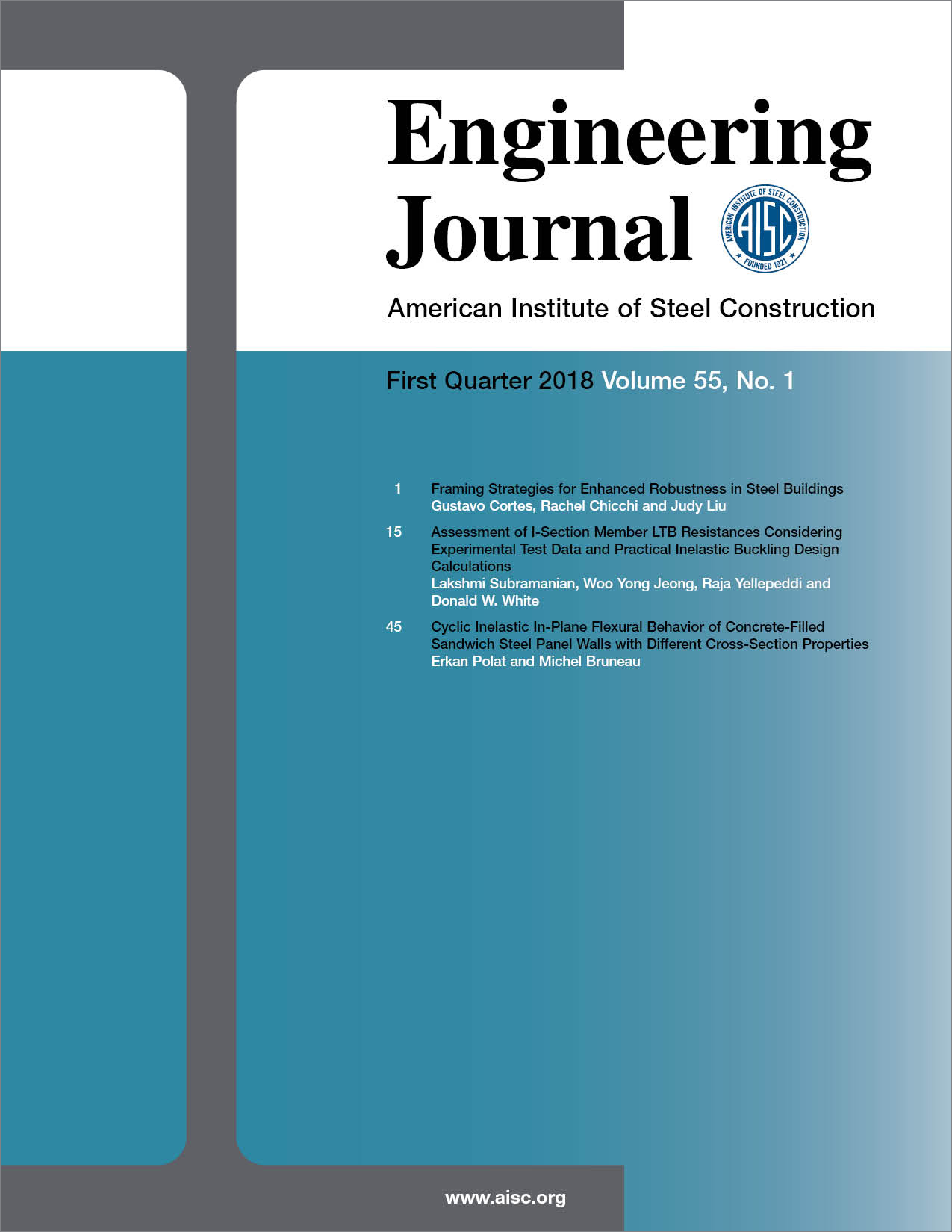Assessment of I-Section Member LTB Resistances Considering Experimental Test Data and Practical Inelastic Buckling Design Calculations
DOI:
https://doi.org/10.62913/engj.v55i1.1125Keywords:
lateral torsional buckling, inelastic buckling, experimental tests, AASHTO, AISC Specification, reliability indicesAbstract
The current AASHTO and AISC Specification equations characterizing the lateral-torsional buckling (LTB) resistance of steel I-section members are the same, with minor exceptions, and are based in large part on unified provisions calibrated to experimental data. This paper takes a fresh look at the correlation of the flexural strength predictions from these equations with a large experimental data set compiled from research worldwide. To account fully for the moment gradient and end restraint effects present in the physical tests, the study employs practical buckling calculations using inelastic stiffness reduction factors (SRFs) based on the design resistance equations. The study focuses on uniform bending tests as well as moment gradient tests in which the transverse loads are applied at braced locations. Reliability indices are estimated in the context of building design. It is shown that a proposed modified form of the current resistance equations provides a more uniform level of reliability, as a function of the LTB slenderness, consistent with the target intended in the AISC Specification. The paper also calls attention to the limited experimental data pertaining to the inelastic LTB resistances in certain cases. The paper concludes by providing additional recommendations for LTB strength calculations in routine design, including illustrative plots conveying the impact of the proposed changes.

